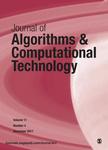版权所有:内蒙古大学图书馆 技术提供:维普资讯• 智图
内蒙古自治区呼和浩特市赛罕区大学西街235号 邮编: 010021

作者机构:Univ Calif Davis Dept Mech & Aerosp Engn 1 Shields Ave Davis CA 95616 USA
出 版 物:《JOURNAL OF ALGORITHMS & COMPUTATIONAL TECHNOLOGY》 (J. Algorithms Comput. Technol.)
年 卷 期:2019年第13卷第13期
页 面:-页
核心收录:
学科分类:07[理学] 070102[理学-计算数学] 0701[理学-数学] 0812[工学-计算机科学与技术(可授工学、理学学位)]
基 金:Air Force Research Laboratory (AFRL) under Universal Technology Corporation (UTC) [15-7900-0005-07-C1, 16-7900-0004-06-C1] University of California
主 题:Computational fluid dynamics finite volume method fluid-structure interaction numerical methods structural dynamics
摘 要:A numerical technique for the solution of the structural dynamics equations of motion is presented. The structural dynamics mass and momentum conservation equations are solved using a control volume technique which is second-order accurate in space along with a dual time-step scheme that is second order accurate in time. The momentum conservation equation is written in terms of the Piola-Kirchoff stresses and the displacement velocity components. The stress tensor is related to the Lagrangian strain and displacement tensors using the St. Venant-Kirchoff constitutive relationship. Source terms are included to account for surface pressure and body forces. Verification of the structural dynamics solution procedure is presented for a two-dimensional vibrating cantilever beam. In addition, the structural dynamics solution procedure has been implemented into a general purpose two dimensional conjugate heat transfer solution procedure that uses a similar dual time-step control volume technique to solve the fluid mass, energy, and Navier-Stokes equations as well as the structural energy heat conduction equation. The resulting overall solution procedure allows for solutions to fluid/structure, fluid/thermal, or fluid/thermal/structure interaction problems. Verification of the multidisciplinary procedure is performed using a cylinder with a flexible solid protruding downstream that mimics a cylinder-flag configuration. The approach is a proof of concept for compressible flow with continuum based solids. The methods are currently being extended to 3D flow fields and solids.